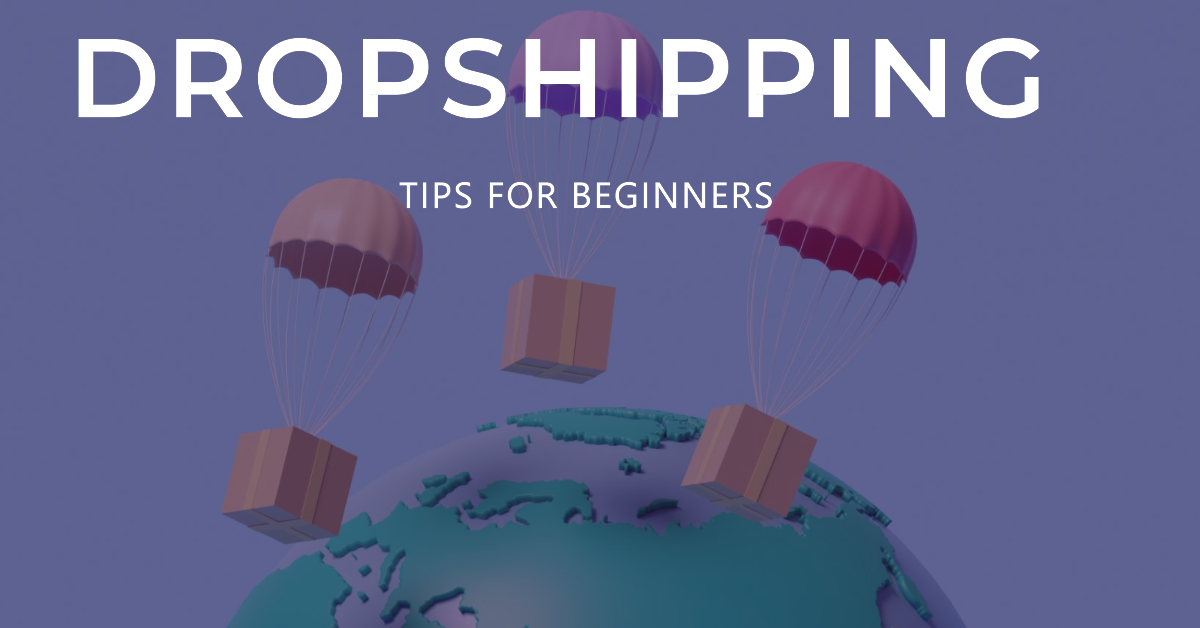dropshipping for beginners: Your Complete Guide to Starting an Online Business
Are you interested in starting an online business without the hassle of managing inventory? Dropshipping might be the perfect solution for you. This guide will walk you through the basics of dropshipping and provide detailed tips for success.
What is Dropshipping?
Dropshipping is a business model where you sell products online without keeping them in stock. When a customer places an order, you purchase the item from a supplier who then ships it directly to the customer. This means you don’t need to handle storage, packaging, or shipping yourself.
Here are some key tips to help you start and grow your dropshipping business:
1. Research Your Niche
Choosing the right niche is crucial for your dropshipping success. A niche is a specific market segment you want to target. Here’s how to do it:
- Use Tools: Tools like Google Trends and keyword research can help identify high-demand, low-competition products that consumers are interested in.
- Evaluate Demand: Look for products that solve problems or fulfill specific needs. Understanding what people are actively searching for can guide your product selection.
- Test Different Niches: Don’t be afraid to explore different niches until you find one that is promising and feels right for you.
2. Choose the Right Suppliers
Your suppliers are the backbone of your dropshipping business. Selecting the right ones can greatly affect your success. Here are key points to consider:
- Check Reviews: Research potential suppliers by reading reviews and testimonials from other retailers. This can give you insights into their reliability and product quality.
- Look for Communication: Make sure the supplier communicates clearly and promptly. Good communication ensures that any issues can be resolved quickly.
- Assess Pricing: Compare prices from different suppliers to find competitive rates. Balance cost with product quality.
- Evaluate Shipping Options: Choose suppliers that offer fast and reliable shipping. Long shipping times can lead to customer dissatisfaction.
3. Offer Unique Products
In a crowded marketplace, offering unique products can help you stand out.
- Differentiate Your Store: Look for products that are not widely available at other stores. Unique items can attract customers who are looking for something special.
- Customize: If possible, consider customizing products to add a personal touch. This can enhance customer loyalty and set your store apart.
4. Build an Engaging Website
Your online store needs to be appealing and user-friendly.
- Design Matters: Choose a clean, professional design that reflects your brand. Use high-quality images and well-written descriptions to showcase your products.
- Easy Navigation: Make sure customers can easily find what they’re looking for. Use categories, filters, and a search bar to help them browse your products.
- Mobile Optimization: Ensure your website looks good and functions well on mobile devices, as many shoppers use their phones to shop online.
5. Optimize for Search Engines
Search engine optimization (SEO) helps your website get found by customers.
- Use Relevant Keywords: Research and incorporate keywords that potential customers use when searching for products in your niche.
- Title Tags and Meta Descriptions: Optimize your website’s title tags and meta descriptions to improve visibility on search engines.
- Content Marketing: Consider creating blog posts related to your niche. This can provide valuable information to your customers while also boosting your SEO.
6. Market Your Store
Having a great product and website is just the beginning. You need to market your store to attract customers.
- Social Media Marketing: Utilize platforms like Instagram, Facebook, and TikTok to promote your products. Share engaging content and connect with your audience to build a community around your brand.
- Email Marketing: Collect email addresses from your visitors (with their consent) and send them updates about new products or promotions. This can keep your customers informed and engaged.
- Pay-Per-Click Advertising: Consider using paid advertising strategies to reach a larger audience. Platforms like Google Ads or Facebook Ads can help drive targeted traffic to your site.
7. Provide Excellent Customer Service
Positive customer experiences are key to building trust and loyalty.
- Responsive Communication: Respond to customer inquiries promptly. Use chatbots, email, or social media to engage quickly with your customers.
- Resolve Issues Efficiently: When issues arise, handle them with care. Address refunds or returns fairly to maintain a good relationship with your customers.
8. Monitor and Analyze Performance
Regularly tracking your business metrics can help you understand what is working and what needs improvement.
- Analytics Tools: Use tools like Google Analytics to monitor your traffic, conversion rates, and sales. This data will help you identify trends and make informed decisions.
- Performance Reviews: Set regular intervals (like monthly) to review your performance metrics and adjust your business strategies accordingly.
9. Continuously Analyze Data and Optimize Performance
Analyzing data helps you stay competitive and improve customer satisfaction.
- Customer Feedback: Regularly solicit feedback from customers to understand their experience and preferences.
- Make Adjustments: Use the insights from your data analysis to tweak your product offerings, marketing strategies, and customer service practices.
10. Pick Good Suppliers
When you’re dropshipping, you’re not making the products yourself. You need to find good companies to make and send the products for you. These companies are called suppliers. Look for suppliers who:
- Have good quality products
- Ship things quickly
- Are easy to talk to when you have questions
It’s like choosing a good teammate for a project. You want someone reliable and helpful!
11. Take Great Pictures
Even though you’re not taking pictures of the products yourself, you can ask your suppliers for good photos. Or, you can make your product descriptions really interesting. Use words that help people imagine how cool the product is. For example, instead of just saying “blue t-shirt,” you could say “super soft sky-blue t-shirt that feels like a cloud.”
12. Be Honest About Shipping Times
Sometimes, products might take a while to reach your customers, especially if they’re coming from far away. Always tell your customers how long they might have to wait. It’s better to be honest than to make people upset because their order is late.
13. Learn About Taxes and Rules
Running a store means you need to know about some important things like taxes and business rules. Ask an expert to help you understand these things. It’s important to follow the rules, just like in any game you play.
14. Have a Return Policy
Sometimes, people might want to return what they bought. Decide how you’ll handle returns and write it down clearly on your website. This helps customers trust your store more.
15. Use Email to Talk to Customers
Collect email addresses from people who visit your store (with their permission, of course). You can send them emails about new products or special sales. It’s like having a club where members get special news!
16. Tell Stories About Your Products
People love stories. When you’re describing your products, try to tell a little story about them. For example, if you’re selling a watch, you could say, “Imagine wearing this watch while exploring a jungle or diving in the ocean!” This makes people excited about buying from you.
17. Keep Learning
The world of online stores is always changing. Keep reading and learning about new ways to make your store better. You could watch videos, read blogs, or even talk to other business owners who are interested in learning more.
18. Be Patient
Starting a store takes time. You might not sell lots of things right away, and that’s okay! Keep trying and don’t give up. Many successful business people had to try many times before finding success.
19. Track and Analyze Your Performance
Use tools to monitor your website traffic, sales, and customer behavior. This data can help you make informed decisions about your product selection, pricing, and marketing strategies. Regularly review your performance and be willing to adjust your approach based on what you learn.
20. Provide Excellent Customer Service
Good customer service can set you apart from competitors. Respond promptly to customer inquiries, address complaints quickly, and go the extra mile to ensure customer satisfaction. Happy customers are more likely to return and recommend your store to others.
21. Consider Diversifying Your Product Range
Once you’re comfortable with your initial product offerings, consider expanding your range. Look for complementary products or explore new niches. This can help you attract more customers and increase your average order value.
22. Build a Strong Brand
Even as a dropshipper, building a strong brand is important. This includes having a memorable logo, consistent visual style, and a clear brand voice. A strong brand can help you stand out in a crowded market and build customer loyalty.
Get Started
Starting a dropshipping business is an exciting journey with the potential for growth and success. By following these tips, including thorough research, choosing reliable suppliers, and continuously improving your services and website, you can build a thriving online store.
This guide is meant to give you a solid starting point, but there’s always more to learn. As you progress in your dropshipping journey, you’ll discover what works best for your specific business.









